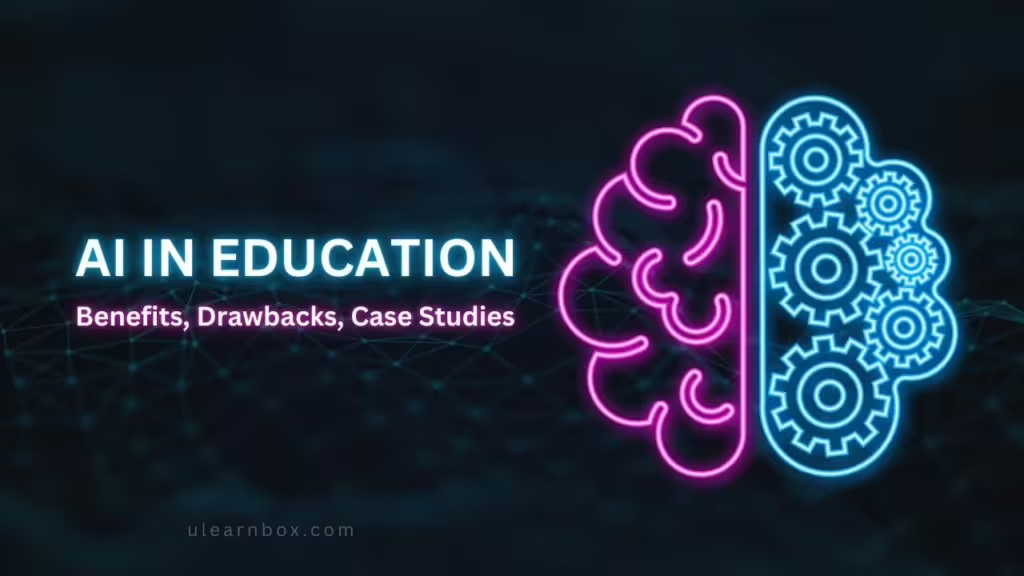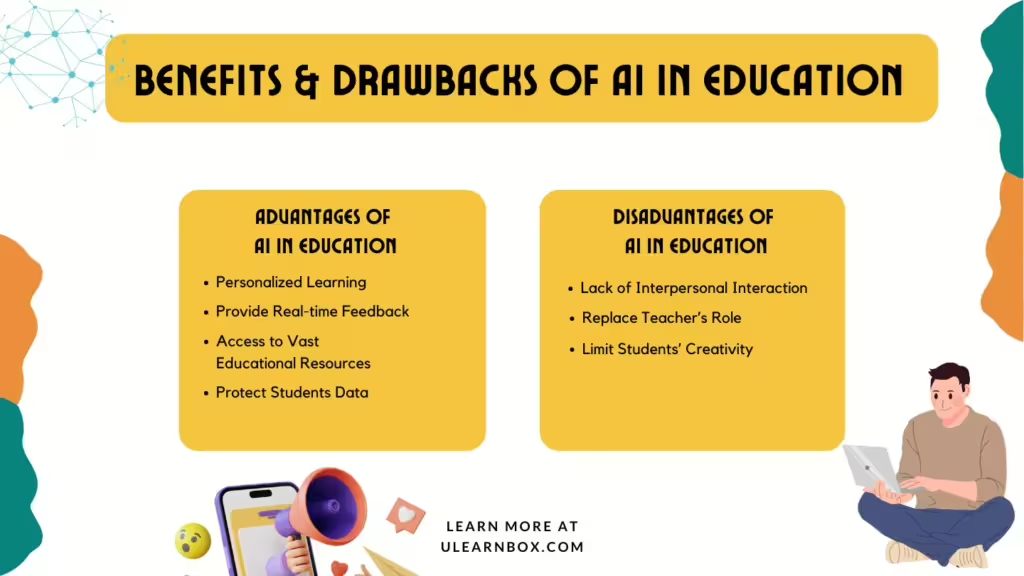AI in Education: Benefits, Drawbacks, and Case Studies
As technology continues to advance, artificial intelligence (AI) is gaining widespread popularity across various industries worldwide. But how can AI be applied in education? In today’s blog, we’ll explore the advantages, disadvantages, and real-world examples of AI in the educational field.
Artificial intelligence is not a new concept in the 21st century, and its potential to transform various industries is clear, with education being no exception. AI’s use in education seeks to improve student learning outcomes and assist teachers in refining their teaching methods. However, along with its benefits, it may also bring certain challenges. Let’s delve into both aspects further.

If you want to know more about AI’s definition and history, see the article overview of AI here.
Benefits of AI in Education
In terms of education, technology offers several significant advantages. Here are the common benefits of AI in education.
Personalized Learning
AI can craft individualized learning experiences that cater to each student’s unique needs. By analyzing student performance data, AI adjusts learning materials, pacing, and difficulty levels, ensuring customized educational content for every learner.
Provide Real-time Feedback
AI is capable of offering students immediate feedback on their work, lightening the load for teachers by delivering simultaneous guidance in classroom settings. This feedback helps students understand their strengths and weaknesses, allowing them to focus on areas for improvement in future lessons.
Access to Vast Educational Resources
AI unlocks access to a broad range of educational materials for both teachers and students, including images, videos, audio, and more. This wealth of resources enhances the learning experience and encourages self-directed learning.
Protect Student Data
AI serves as a digital safeguard, protecting student data and online activities from cyber threats. Not only does it secure student information, but it also ensures a safer online environment for educators and administrators alike.

Drawbacks of AI in Education
While AI offers numerous educational advantages, it is essential to consider its drawbacks. Below are some of the challenges AI presents in education.
Lack of Interpersonal Interaction
Although technology significantly enhances the educational experience, relying solely on it can hinder students’ social communication skills and delay emotional intelligence (EQ) development. This reliance could contradict educational goals, highlighting the need for AI to complement, not replace, vital aspects of learning.
Replacing the Teacher’s Role
One key concern with the extensive use of AI in education is the potential for it to diminish the role of teachers. If AI can provide instant feedback, deliver vast resources, assess learning outcomes, and answer student questions, it raises the question: what is the teacher’s role now?
Limiting Students’ Creativity
In today’s environment, students can quickly turn to AI tools like ChatGPT or BingAI for answers, which, while convenient, can limit critical thinking. Overreliance on these tools may make students less inclined to think creatively or generate new ideas.
These are a few pros and cons of AI in education. In the next section, we’ll explore examples of AI in the educational field.
Example of Artificial Intelligence in Education
AI can benefit many aspects of education. Want to know more? We’ll examine actual instances of how AI is applied in educational settings.
Learning Language
Learning a new language has never been easy with AI-powered assistants. There are many language-learning applications in the market nowadays, you name it, Duolingo, ELSA, and so on. Thanks to AI algorithms, lessons are tailored to match individual performance as well as create amazing and unique personalized learning experiences for each student.
Create Online Quiz
Yes, you do not hear wrong! Artificial intelligence can help teachers create online quizzes for online exams or warm-up activities in class. The only thing you need to focus on is the question content, the apps will handle the layout and color to make the quiz slide appealing and attractive. You can experience Quizizz, Quizlet, or Kahoot to see if it addresses your concerns.
Create Presentation
AI empowers individuals to create compelling presentations with efficiency and innovation. Various online tools, such as uPresenter, rely on AI to help users refine content and create visually appealing slides. It not only saves time but also contributes to the creation of polished and professional presentations, highlighting the transformative impact of AI in the field of content creation.
As shown in the figure above, AI can assist both teachers and students to teach and study smarter and more effectively. Regarding learning language, there are many language-learning applications in the market nowadays, you name it, Duolingo, ELSA, and so on. You can also experience Quizizz, Quizlet, or Kahoot to create online quizzes. What’s more, various online tools, such as uPresenter, rely on AI to help users refine content and create visually appealing slides.
Final Words
In conclusion, integrating AI in education comes with both advantages and challenges. AI can enhance personalization and efficiency in learning, but there are concerns about job displacement and over-reliance on technology. However, the examples discussed demonstrate AI’s potential to reshape teaching and learning. Moving forward, it’s essential to strike a balance – leveraging AI’s benefits while being mindful of the obstacles it presents, ensuring we maximize its positive impact on education.
Follow us on Twitter to see more interesting information.
See more:

